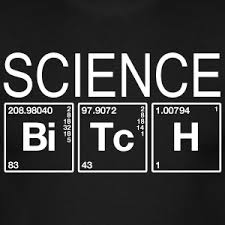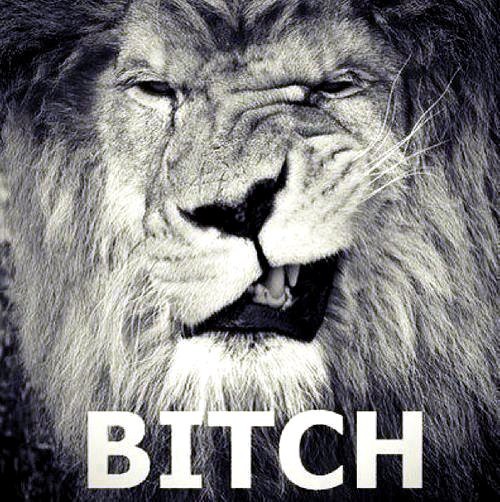 Dave Tozer served as the executive producer for John Legend’s latest album “Love in the Future” with Kanye West and the legend himself. The Source Magazine sat down with Tozer in his manhattan recording studio to discuss how he got his start in music and the inspirations for his latest project.
Dave Tozer served as the executive producer for John Legend’s latest album “Love in the Future” with Kanye West and the legend himself. The Source Magazine sat down with Tozer in his manhattan recording studio to discuss how he got his start in music and the inspirations for his latest project.
On “Love in the Future” Tozer has credits on 15 songs, and 7 top-line producer credits. He also mixed 13 of the songs (the most on the album) and co-wrote 10 of the songs. Dave first realized he was passionate about music in high school, when he taught himself how to play the guitar. In Part I of our interview, Tozer tells us about his musical influences and how he first linked up with John Legend, who was a college student at the University of Pennsylvania, at the time.
Tozer also gave The Source a behind the scenes look into making the album and a track by track breakdown.
1. Love In The Future (Intro)
The intro is interesting…because John and I actually cut that live in the studio. That was just me playing a 50’s style guitar, John singing at the same time. We cut it like that with a lot of character…almost 50’s-like in its sound or even murky with the slap back delays. And then I actually printed it to vinyl acetate and then I recorded it back in from vinyl…So you’ll hear this sort of vinyl character on the intro…but that’s officially not a plug-in, that’s a vinyl record being played back in.
2. The Beginning…
Very minimal in the production, cool tune. It’s got a Sara Bareilles and Ingrid Michaelson sample in there, which was a sample of the piano and I think probably of Ingrid playing the ukulele because I’ve worked with Ingrid before and I know she’s a fan of the ukulele. She actually brought a ukulele here one day. And so there’s a little reoccurring sample of that in there that it’s based around. And it sets the tone moving forward on the album, but in a very minimal way, you know. It really focuses around John’s voice. I think it’s certainly the centerpiece there.
3. Open Your Eyes
“Open Your Eyes,” is a Bobby Caldwell cover. Not a lot of people will know the original Bobby Caldwell version, but a lot of people will know the Common song “The Light,” which samples that. It’s produced by Jay Dee. It will be interesting to see what people think of this because they’ll recognize the parts that they know from the sample, but probably not the rest of the song…So this is kind of the third time around on that because it’s a cover of the original, but it also has elements of the Common version, with the drums, the chorus…So we pulled from that a little bit. “Open Your Eyes” was a Kanye idea. I think Kanye’s thing with that was he just felt like it would be great for John to sing at shows and do that song because it would give a lot of fans a good feeling, a good memory…knowing that song from back in the day and he was just into it and felt like it would be a cool one to try out. So we tried it out and it stuck.
4. Made To Love
“Made to Love” is also one of my favorites on the album. It’s certainly the most progressive song on the album and the most progressive single that John has ever released musically. Song-wise, it’s very unique in terms of the stuff we’ve done on the album. The song structure is unique and interesting and unusual and Kimbra’s great. So we had Kimbra in the studio and we were working with Kimbra on another song for her album, and Kimbra came by one day when John and I were working in the studio here in Germano…and we had the idea to maybe have her on it…John and I had just finished writing the lyric and melody – the top-line to it. We played it for Kimbra and she really liked it and then Kimbra got this idea to try a melody that she had…So she got on the mic and started humming these melodies. And she did a bunch of that scatting because it was just really about capturing the melody idea she had. And so we got it down and we were like, “that’s cool” and then later as I worked through it…The initial idea was that if we were to use that, we’d probably write some lyrics to it and develop it further. But as I was editing the song and working through it…I just really liked it the way it was…She just sounds so cool. And I started sort of putting it in certain spots and shaping it up so that it was like a reoccurring part, a hook. And then we had this sort of breakdown part, which was sort of scatting, almost like a solo. And so I just said to John, “Let’s use it like this. I think it’s great!”
5. Who Do We Think We Are
I think of that as one of the more classic soul productions on the record, but again combined with hip-hop…And Rick’s voice works perfectly as an instrument on that song. It’s where his vocal timber lies. So that worked out really well. And then we had some really interesting arrangement ideas on that – sort of the Mellotron strings that are in playing the melodies during the Rick Ross verse, and Brandee Younger playing harp, real harp on that…It’s almost like there are Baroque instruments on it. And one of the things I like about a lot of classic soul music and classic Curtis Mayfield is that you have this interesting combination of sounds. We have this sort of black American soul music embedded in the rhythm section of the drums and bass and piano and guitars, playing funky 70’s era funk music. But then on top of that, you have European-inspired orchestras you know — strings, horns, French horns, harps, all over doing the glissandos that they do. And so we have a lot on that recording and that’s why it reminds me a lot of the classic semi-soul records, the Curtis Mayfield stuff, later Motown. It’s all over ”What’s Going On” album, Marvin Gaye…So I’m inspired by that.
6. All Of Me
“All of Me” is a ballad that John wrote to his fiancée, a love song. And it’s a great song. We kept it very minimal. We went through a few different versions of that song, working on it along the way and in the end we stripped it down…It’s really focused around the lyric and the melody on that song and his vocal performance. So it’s mostly a vocal piano performance with a little bit of synths tucked in there and then some robot voices in there that we worked on, which I was really happy about. But think they add a nice little element to it that just gives it some flavor underneath and takes it in new directions. A lot of people call it the “Ordinary People” of this album and it’s kind of like that, but again it’s pushing forward. And I think we got a really great vocal sound on John and there’s a lot of character in the recording quality of that one.
John’s vocals on the album are stellar.
I think and John thinks, also that this is his best singing album. This is the best singing that he’s done and he’s gotten better as a singer and he certainly said that through this process and he’s aware of that. And so I think a lot of people will recognize that, too. It comes across in the performances. And the guy could always sing, but he continues to get better. His phrasing on it is impeccable and he makes good choices as a singer. And he’s an easy singer to produce in terms of producing the vocals and working on his vocals. I do a lot of vocal production work with different artists, so it can vary in terms of how tough it is to get a performance out of an artist. It can vary with one artist amongst different songs in the album. But with John it’s pretty easy because he’s good at taking direction. He has his own great ideas and he can execute them pretty quickly and flawlessly.
7. Hold On Longer
That one is very sort of Stevie Wonder influenced. It’s there in the writing, but it’s also there in the production, in the arrangement as well.One of the things that we added to it was these moog synthesizers doing high harmony lines in the middle of the song, which is a staple of 70’s era, Stevie. Once he got a hold of synthesizers, he had those things singing. So we have some of those in there because the track called for it, being a fan of that era of Stevie’s music, you’re hearing that when you’re listening to a song like that. So we put him on there and then we have a full-string orchestra on that one…and it’s another great vocal recording and performance by John. That’s one of the ones I’m most happy about in terms of the vocal performance and sound. And an interesting thing you’ll notice on all his vocals, mostly all of the things we cut in this album, we recorded to tape before putting into the computer, in a sort of old-school way I guess, but there’s a lot of character that you get from that and the recording quality really makes the vocal in particular shine.
This is Part II of Dave Tozer’s track-by-track breakdown of “Love in the Future.”
10. What If I Told You? (Interlude)
One of the things I always like to do with a lot of soul music is make things sound like samples that aren’t. So with “What If I Told You,” it sounds like an old record, but it’s not. It’s all new music recorded. Similar thing with what we did with the intro where we recorded it to a record. This one we didn’t do that, but we put those kind of treatments on, with the horns and just the vibe of Mellotron strings that are in there and those weird little guitar parts…[It has] a lot of character in the recordings and just making it feel like it’s an old soul record, which has a nostalgic quality in it, too.
11. Dreams
That was one of the earlier ones as well. I remember being in the studio in LA, we were working on something else and John was doing a writing session with Joe Jonas I think, actually. And Joe Jonas was in the studio, as well. And it was an idea I think that was started for Joe Jonas, it was just an initial idea and then sort of didn’t work out for that and John developed it for himself. And I really like those vocals that are on the end of the production and that one goes into a cool place. And it’s just got a nice attitude to that one. Kanye made some suggestions to that one in terms of editing it and how to do it and so we incorporated those and then it’s a pretty simple song with a classic John tune.
13. Angel (Interlude)
That’s a short little interlude, which is originally an Anita Baker song. So it’s essentially another cover. And actually that also was another Kanye idea. That was something that Kanye really brought to the table and championed for…So Kanye brought both the cover ideas to the album with the “Angel” interlude and “Open Your Eyes.” And I think he wasn’t over thinking that. He was like, “This song will make people feel good”…And John has done great singing, and so that worked out as well.
14. You & I (Nobody In The World)
“You & I” was a really adventurous production to work on. We went through a variety of styles on that one in terms of working on the production. That song John wrote with Dan Wilson. I didn’t write that one. Dan Wilson wrote “Someone Like You,” the Adele song, and of course he wrote “Closing Time” of Semisonic, from the band Semisonic. So a lot of people know that one. But it’s a great tune, and I always liked it and early on John brought it to me saying, “Hey, I wrote a song with Dan, check it out.” And then we worked on it for a while and shaped it up. There’s a lot of dynamics to that one. Intimate moment and then it builds up and gets into a big bridge where John is really belting it and then it goes back to whisper again. And so there’s some great dynamics, great instrumentation on that one. We had horns and the Moog synthesizers all over it and the Mellotron. I was using the Mellotron sounds a lot on this album. Like I said there is a lyrical theme to the album, but there’s also musical themes and that was certainly part of this sound palette.
15. Asylum
I love the edginess of “Asylum.” It’s again, another one that’s very progressive for John I think and it’s actually the slowest track on the album. It’s really got the slow burn, it’s like a slow jam, but it’s so weird because you got these like white noise snares…And it’s kind of disturbing and I think it’s one of the cooler songs John and I have ever written…I think the lyrical idea is very unique and cool, and the production. I really set out to make it reflect the lyric. The lyric is saying if you’re with someone whose a little bit crazy, you just want to surrender yourself to that…And so I made this sonic landscape reflect that as well and it’s like the sound of going crazy a little in your head. You got some of these screechy backwards guitars – weird guitar sounds in the background and backward synths and these drums that really give a lot of edge. And I feel like the song is originally beautiful.
16. Caught Up
My favorite thing about “Caught Up” is the lyric says, “We finally got to take the night off, to make some little tax write-offs.”
It’s a cool production. I love the drums. I love the sounds on that one, again lots of mellotrons. And it’s a great vocal performance from John, again. I really love the vocal sound he got on that. There’s some adventurous production themes going on in there with the vocal delays and things at the end that are sort of flying around and changing…but it just feels really good. And we had some great chord changes in it…Hit-Boy had started the production on that one and then we worked on it together as well. And then Kanye was involved in the writing of that one…I think, actually that’s a Kanye line, the bit about the tax write-off.
(Photos Courtesy of Dave Tozer)
John Legend’s “Love in the Future” is in stores now.
















